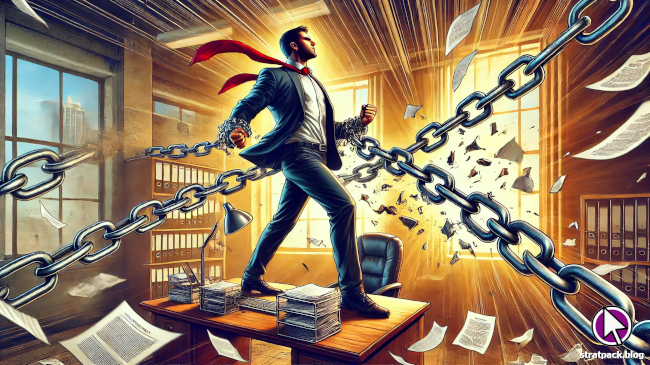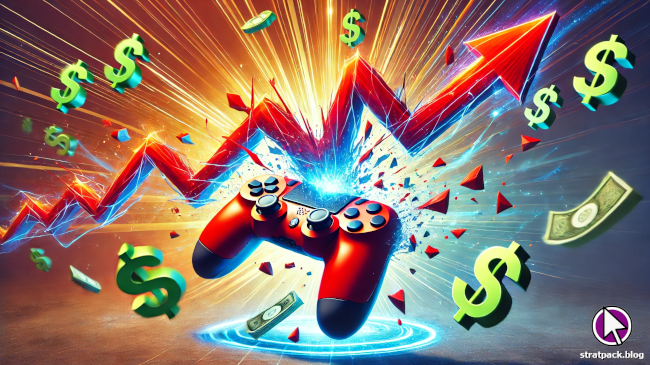
Why do we believe morality is in decline?
It’s a little embarrassing to admit it publicly, but I sometimes suffer from the “le wrong generation” syndrome that seems to plague online comments sections. A little nostalgia is healthy, but occasionally I bring myself down with the thought that I could have lived in a generally more friendly and pleasant era than the one I inhabit, which isn’t productive at all.
Are things really getting worse?
Imagine my intrigue then, when I stumbled across an article on the illusion of moral decline by Adam Mastroianni this week. In it, he provides the figures that show that people believe morality is in decline, people have always believed that morality is in decline, and that by objective measures morality hasn’t actually declined at all - if anything, it may have improved.
This begs the question: If things are getting better, why do we always think they’re getting worse? Mastroianni’s article offers several possible reasons:
- People just say that morality is in decline when asked because they think it makes them look more moral personally
- People are nicer to you when you’re a kid and therefore seem to get meaner when you grow up and they treat you like an adult
- People hear cherry-picked stories about how lovely the past was from relatives, television series, and films
- People think younger generations are less moral than they were because they are biased to forget immoral things they did when young
The main theory put forward in the article is that people pay more attention to negative information, but memories of positive things last longer. Therefore the present seems worse than it is, and the past seems better than it was, misleading us to believe morality is in decline.
Additional factors
I agree with Mastrianni’s points (as I should - he’s a proper social psychologist with statistics to back him up and everything), but his article also got me thinking about additional elements that might be contributing. While natural biases certainly play a big part, I also think there are environmental factors in the modern world that amplify the effect of our tendency to believe the present is worse than it is.
We’re shown more immorality
From real-life horrors to disturbing fiction, it’s a lot easier to come into contact with immoral content in 2023. It’s not unusual to encounter terrifying or gory images on social media, the 24/7 news cycle is always hungry for new negative stories, and there are any number serial killer documentaries available on demand on your favourite streaming site.
In the realm of the arts, we now casually watch series that would never get made decades ago. I can turn on Yellowjackets and see people doing horrific things (no spoilers), Breaking Bad was about a brutal drug lord, and Netflix even made a series about Jeffrey Dahmer. I’ve been reading St Augustine’s Confessions, and even back in the fourth century he was writing about how he felt he absorbed negativity from drama into his soul.
Even taking a step back down the morality scale, it’s easy to see how the internet could turn us all into pessimists. At one time porn would have meant a dirty video or magazine your friend found - now it’s thousands of women flaunting themselves on social media to advertise their OnlyFans accounts. And how many arguments would you see or get into in the 1990s? In 2023, I can open my phone at any time and read a Twitter dispute that the participants would like never have in real life.
We believe more things are immoral
Before I dive in, there’s a point to be made around the word “immoral”. Somebody answering a survey might not necessarily have to believe that people have become more sinful or evil to respond that morality is in decline. They could also have fewer positive experiences with others, or see others express more views that they personally disagree with.
In this way, increasing polarisation in politics (and other arenas) is a likely contributor to the impression of immorality - and this looks to be supported by a spike after 2016 in some of Mastrianni’s graphs. Speaking in US terms, Democrats and Republicans used to be respectful rivals - now they both see each other as a “threat to democracy” and their country itself, to a level where it’s almost become a meme for social media users not to be able to endure a Thanksgiving dinner with relatives from the opposing camp.
The US has always been split almost 50/50 politically, so even if you believe one party to be immoral, the level of immorality hasn’t really changed - it just seems the rhetoric has reached a level where people are much more sensitive to others who have views incompatible with theirs, and therefore might be more likely to view (and report) them as immoral.
More immoral people are getting caught
Decades ago, it was easier to be invisibly immoral. Without CCTV and DNA analysis, it is likely that a greater number of criminals went undetected. Without the internet, the widest reach anybody’s unsavoury views could muster depended on how loudly they could yell in the town square.
This is a pretty standard example of the need to consider the causes behind statistics. If more murderers are going to jail, that could mean there are more murders, but it could also mean there is more justice being dealt. If more people seem to be saying objectionable things, that could mean there are more people with these beliefs, or it could just mean they have an easier way to reach more people - and get called out - than before.
Additionally, we’re seeing more people get caught. Once upon a time, a local murderer’s arrest would be reported in the newspaper, and if you missed that day’s issue or television bulletin then you’d likely miss the story. Now these news stories are run 24/7 on television, go viral on social media, are pushed to our phones as notifications, and are available forever online - so it’s easy to feel like there are more of these stories around.
If you’ve made it this far without doing so, I’d really recommend you take the time to read the original article. It’s far better researched and more scientifically backed than my two cents are.

















